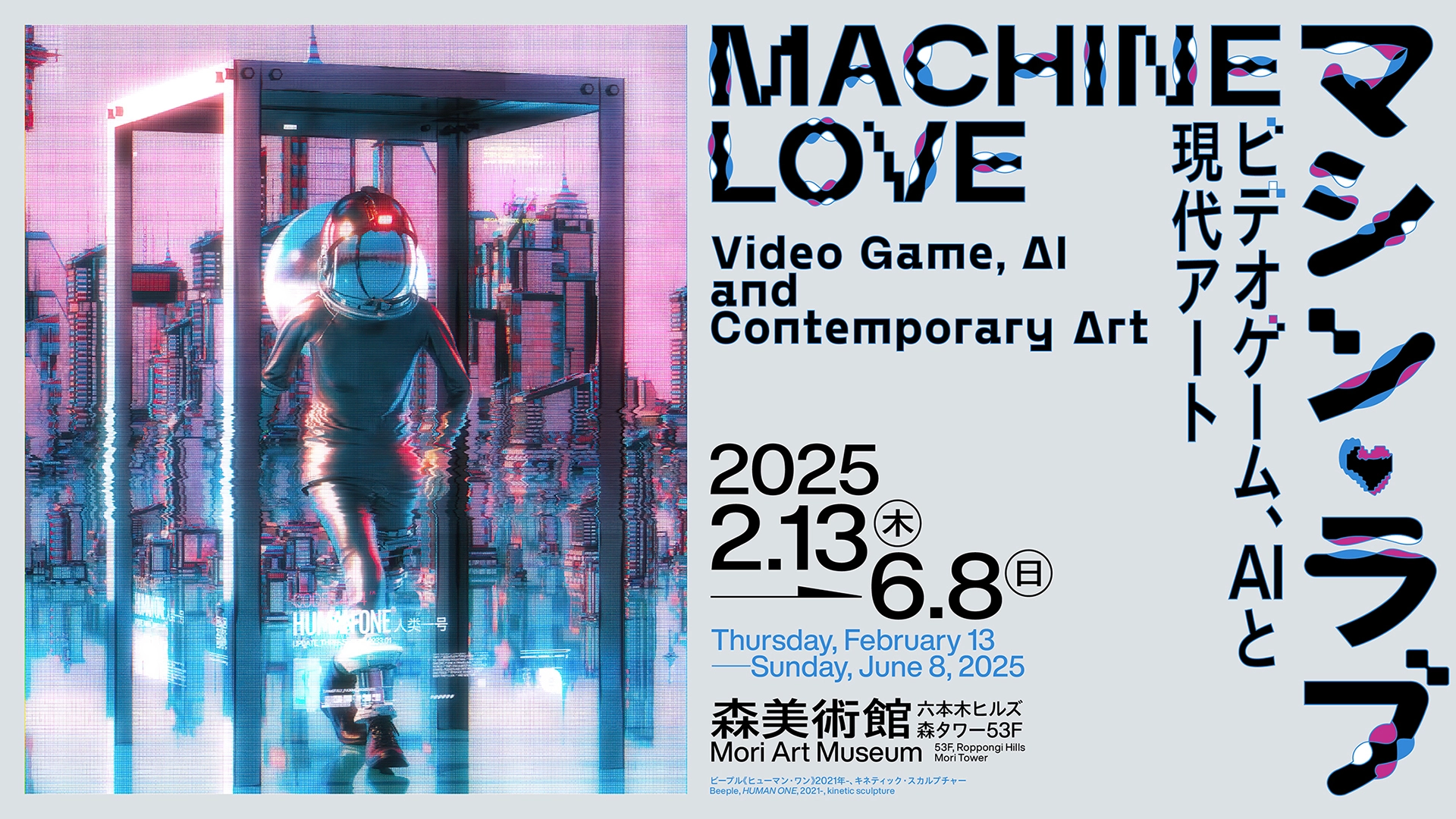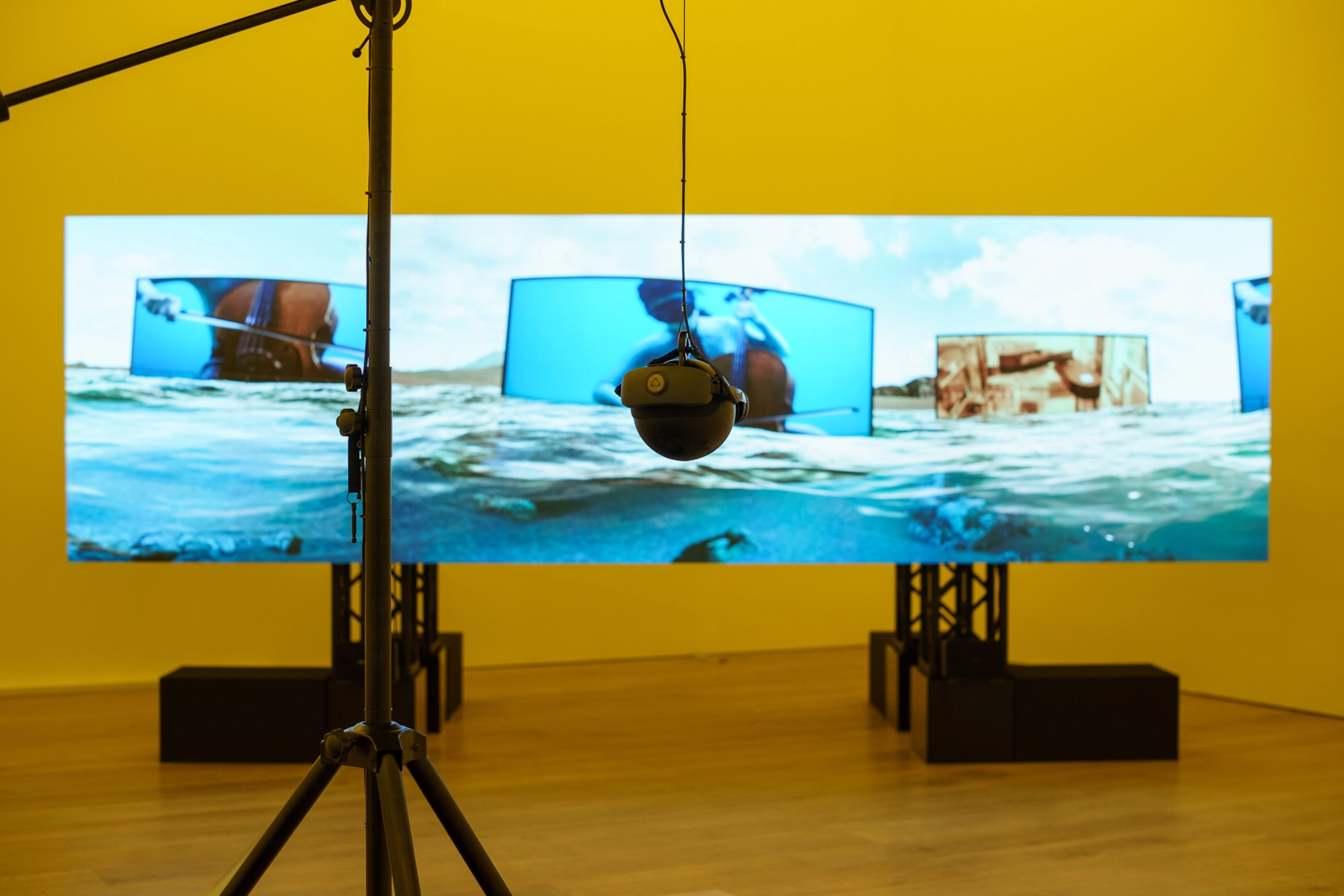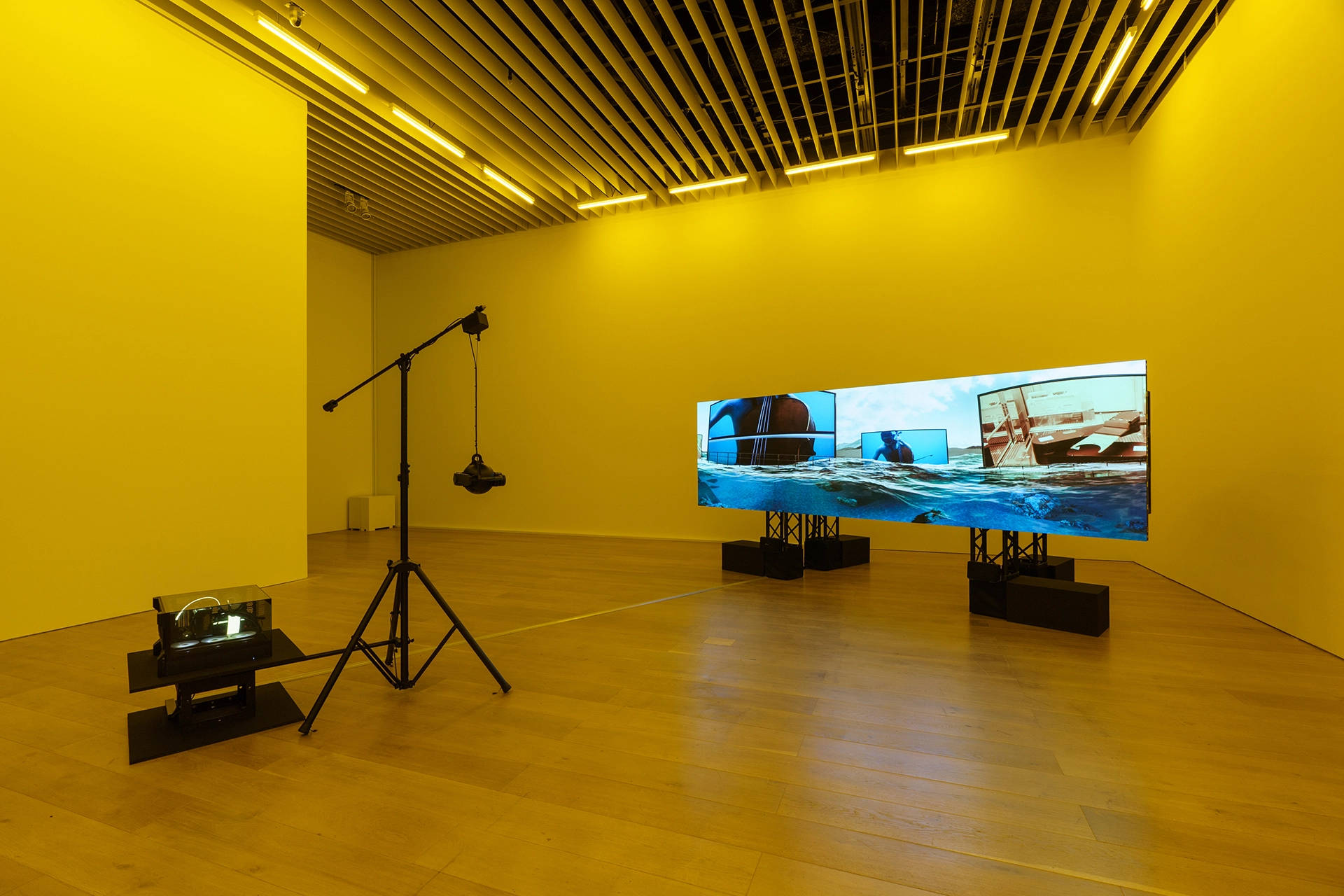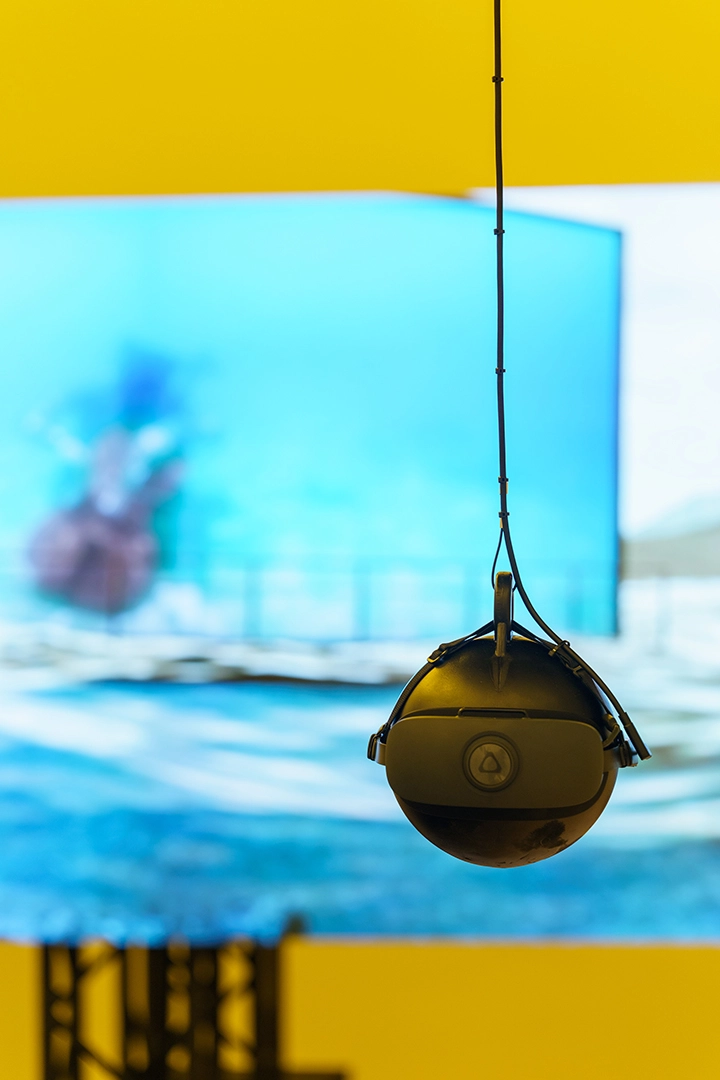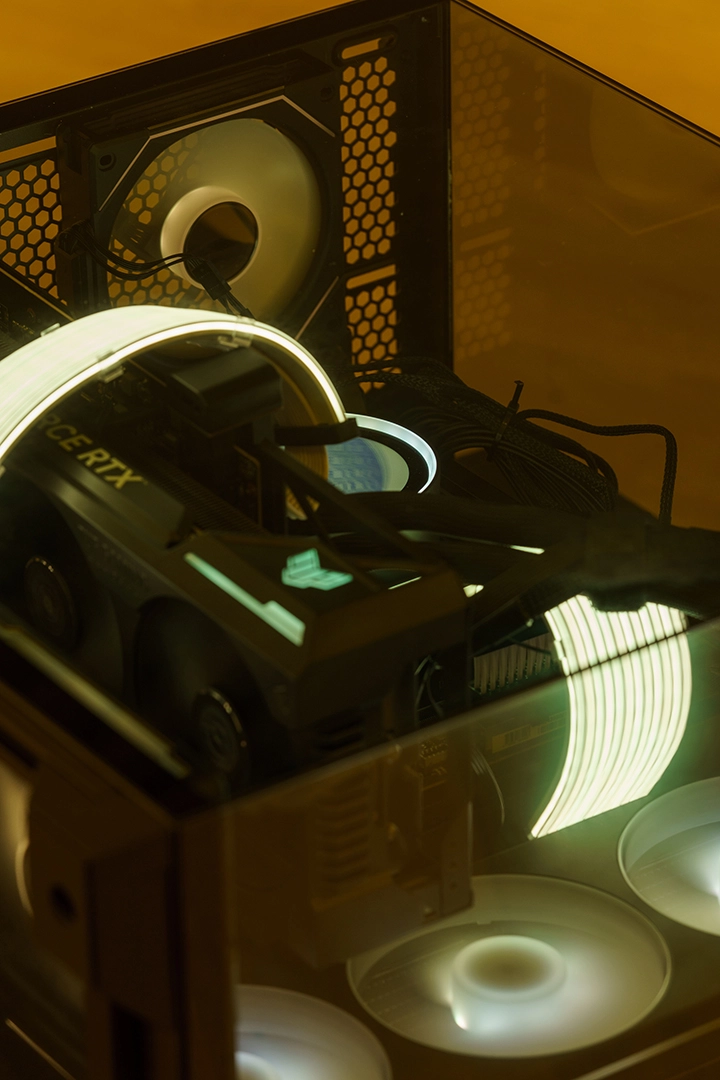top of page
2025
CATALYST PROJECT
SILICON SERENADE
CHIA-WEI HSU
2025/03/13 - 06/08
Inspired by the fact that the silicon for semiconductor wafers that are essential to modern digital technology products can be extracted from sandy beaches, Silicon Serenade is composed of a virtual seaside, an underwater cello performance scene, and footage from the Industrial Technology Research Institute (ITRI) in Taiwan, which conducts research on chips used exclusively for AI, with music by a generative AI to examine the latest technologies at the level of their materials.
Curated by: Kataoka Mami (Director, Mori Art Museum), Martin Germann (Adjunct Curator, Mori Art Museum), Yahagi Manabu (Associate Curator, Mori Art Museum).
Artist: Beeple, Kate Crawford and Vladan Joler, Diemut, Fujikura Asako, Hsu Chia-Wei, Kim Ayoung, Lu Yang, Sato Ryotaro, Jacolby Satterwhite, Jakob Kudsk Steensen, Adrián Villar Rojas, and Anicka Yi.
Silicon Serenade
Virtual reality, host computer installation, buoyant ball installation, spliced screens
450 x 100 cm | 5 min | 2024
The beach is covered with silicon, an essential component of the semiconductor chips used in various digital technology products. Through a series of processes, circuits are etched onto wafers and then cut into many fingernail-sized chips. These powerful chips are what make artificial intelligence possible. This work traces the origin of the materiality behind these AI chips through their manufacturing process, presented through a kind of digital texture.
This work uses a game engine to create a virtual beach scene. As the waves fluctuate, several virtual screens on the sea surface play live videos. These videos include cello performances by underwater performers and footage of a laboratory at the Hsinchu Industrial Technology Research Institute, showcasing the CoWoS chip manufacturing process which is so crucial for AI technology. The music in the work adopts an electronic style and was actually generated by AI. Using keywords extracted from the process involving the beach, silicon, wafers, and AI, the AI generated the lyrics, melody, and performance, and even sang the song. This AI-generated music is intertwined with the cello music, laboratory footage, and virtual beach.
The exhibition’s installation consists of a VR headset, a floating sphere suspended in space, and an electronic screen. The floating sphere gently sways in the space, and the trajectory of its movement is directly linked to the images in the VR headset. This motion, generated by the dynamics of the floating sphere, is projected onto the electronic screen, presenting a first-person perspective of the sphere and its journey from physical to digital.
MACHINE LOVE: Video Game, AI and Contemporary Art at The Mori Art Museum
With the explosive growth of artificial intelligence (AI) and the integration of virtual and real worlds, the latest cutting-edge technologies have quickly penetrated our daily lives. This tendency has become especially apparent since the COVID-19 pandemic, when many human activities shifted towards virtual space. Looking back, the progress of art and technology has run parallel to each other throughout the course of history, a phenomenon that is especially evident in the field of computer art and video art. While recent innovations in video game engines and AI offer unprecedented possibilities for artists, the advent of generative AI also has raised significant concerns. Such developments are now attracting considerable attention in various fields and industries, including the contemporary art world.
MACHINE LOVE introduces 48 works of contemporary art that employs game engines, AI, and virtual reality (VR), including a number that utilize generative AI – a technology with the capacity to surpass human creativity. These works explore new aesthetics and image-making through the use of various data sets that exist in digital space. Some works examine how online avatars and characters can nurture new types of gender and racial identities that lie beyond the reach of social norms, while others demonstrate the visualization of hyper realistic landscapes. With artists adopting these methods, at the core of their creative practices are universal views of life and death, ethics, the environmental crisis facing contemporary society, historical interpretation, and diversity.
This exhibition presents artworks created in collaboration between "machines" and artists, offering immersive spatial experiences through large-scale installations. It serves as a platform to reflect on the relationship between humans and technology, exploring emotions such as love, empathy, joy, fear, and anxiety. Visitors are invited to engage in a space where reality and virtuality converge, contemplating new ways to navigate an uncertain future.
ARTIST
CHIA-WEI HSU
Graduated from Le Fresnoy - Studio national des arts contemporains, France, Chia-Wei Hsu’s work as an artist, filmmaker, and curator merges the language of film and contemporary art and unearths the complex mechanisms behind the production of images. Through his artistic practice, Hsu weaves connections between humans, materials, and places that have been overlooked or omitted in conventional historical narratives.
Hsu has had solo exhibitions such as Silicon Serenade at Liang Gallery (2024; Taipei, Taiwan), Tung Chung Art Award: Giant Panda, Deer, Malayan Tapir and East India Company at Museum of NTUE (2019; Taiwan), Black and White – Malayan Tapir at ISCP (2018; New York, the United States), MAM Screen 009: Hsu Chia-Wei at Mori Art Museum (2018; Tokyo, Japan). Industrial Research Institute of Taiwan Governor-General’s Office at Liang Gallery (2017; Taipei, Taiwan), Huai Mo Village at Hong-Gah Museum (2016; Taipei, Taiwan) that was recognised by the Annual Grand Prize of the 15th Taishin Arts Award and Position 2 at Van Abbemuseum, (2015; Eindhoven, Netherlands). He was the finalist in the HUGO BOSS ASIA ART Award in 2013, and won the Annual Grand Prize at the 15th Taishin Arts Award in 2017. In 2024, he won the 10th Eye Art & Film Prize.
His works also presented in group shows such as Machine Love in Mori Art Museum (2025; Japan), Untranquil now in Hamburger Kunsthalle (2024;Germany), Thailand Biennale Chiangrai (2023;Thailand), Aichi Triennale (2022; Japan), Asia Pacific Triennale (2021; Australia), Singapore Biennale (2019; Singapore), A Tale of Hidden Histories at Eye Filmmuseum (2019; Netherlands), the Biennials of Shanghai, Gwangju, Busan and Sydney (2018), 2 or 3 Tigers at Haus der Kulturen der Welt (2017; Berlin, Germany) and Taiwan Pavilion at the Venice Biennale (2013; Italy).
He is also the curator of Asian Art Biennial at National Taiwan Museum of Fine Arts (2019; Taichung, Taiwan), Taiwan International Video Art Exhibition at Hong-Gah Museum (2018; Taipei, Taiwan), and THAITAI: A Measure of Understanding at Bangkok Art and Culture Centre (2012; Bangkok, Thailand).
bottom of page





